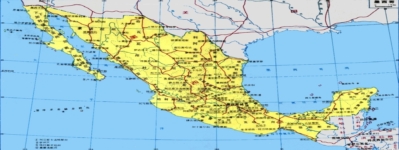How Fish Recognition Mirrors Human Risk Perception
Understanding how living beings assess risk is fundamental to comprehending decision-making processes across species. Humans, with their complex cognition, evaluate risks through a series of biases and heuristics that often shape outcomes in areas like finance, health, and social interactions. Interestingly, even fish—despite their simpler nervous systems—exhibit sophisticated recognition and response behaviors that are closely tied to survival. Studying fish recognition and their environmental cues provides valuable insights into the universal principles underlying risk perception, revealing parallels that can inform human behavioral science and practical decision-making.
Table of Contents
- The Cognitive Foundations of Risk Assessment
- Fish Recognition and Environmental Cues
- Risk Perception in Fish: Feeding and Predation
- Modern Examples of Risk Perception: The Role of Technology
- The Impact of Repetition and Expectation on Risk Perception
- Unconscious Biases and Risk Perception
- Non-Obvious Factors Affecting Risk Perception
- Implications for Behavior and Decision-Making
- Conclusion: Bridging Natural and Human Risk Perception
The Cognitive Foundations of Risk Assessment
Humans evaluate risk through a complex interplay of cognitive biases and heuristics—mental shortcuts that simplify decision-making. For example, the availability heuristic causes individuals to overestimate the likelihood of dramatic but rare events, while the gambler’s fallacy leads to the mistaken belief that past outcomes influence future risks. These biases often serve as adaptive tools in uncertain environments, but can also result in systematic errors.
In contrast, fish rely on sensory mechanisms—visual and chemical cues—to assess threats and opportunities. For instance, predatory fish like bass use their lateral line system to detect vibrations indicating potential prey or danger, enabling quick responses vital for survival. Despite their simplicity, these mechanisms function as biological heuristics, allowing fish to make rapid decisions based on environmental cues.
Drawing parallels, both humans and fish employ cognitive shortcuts—humans through mental shortcuts, fish through sensory filtering—to navigate risk-laden environments efficiently. Recognizing these shared strategies underscores the universality of risk assessment principles across life forms, illustrating how survival shapes perception at both conscious and subconscious levels.
Fish Recognition and Environmental Cues
Fish depend heavily on visual and chemical cues to evaluate their surroundings. Visual cues include the shape, size, and movement patterns of potential threats or prey, while chemical signals—such as pheromones or alarm substances released by injured conspecifics—serve as vital indicators of danger or safety. For example, when a fish detects chemical alarm cues, it often exhibits increased vigilance or retreats from the area.
Environmental familiarity also influences fish risk perception. Fish accustomed to certain habitats recognize familiar structures or sounds as safe, reducing their perceived threat level. Conversely, unfamiliar environments trigger heightened caution, similar to how humans rely on environmental context to judge risk—such as feeling more vulnerable in an unknown neighborhood compared to a familiar one.
This reliance on environmental cues mirrors human behavior, where familiarity with surroundings often influences perceived safety. For example, individuals may underestimate risks in familiar settings like their home but become overly cautious in unfamiliar environments, demonstrating how environmental familiarity shapes risk perception across species.
Risk Perception in Fish: Feeding and Predation
Predatory fish such as largemouth bass rely on recognition patterns to hunt effectively. They distinguish prey based on specific visual features—color, size, and movement—while avoiding threats by recognizing predator cues. Their feeding strategy exemplifies a balance between risk and reward: approaching prey increases energy intake but also elevates the chance of predation or injury.
For instance, bass may adjust their hunting behavior based on environmental conditions. In high-risk settings—like murky waters where prey are harder to spot—they may adopt more cautious approaches, similar to humans being more risk-averse in uncertain financial markets. Conversely, in familiar, low-threat environments, their confidence increases, leading to more aggressive feeding behavior.
These patterns have direct implications for human decision-making. When individuals assess risky scenarios—such as investing in volatile markets—they often weigh potential gains against the perceived threat of loss, mirroring how fish modulate their behavior based on environmental cues and perceived risks.
Modern Examples of Risk Perception: The Role of Technology
Technology has introduced new dimensions to risk perception, especially through gambling and gaming platforms. Slot machines, for example, utilize the concept of Return to Player (RTP)—the percentage of wagered money expected to be paid back over time—as a form of perceived risk and reward. Players interpret high RTP as a safer bet, even if actual outcomes are governed by chance.
A modern illustration is Big Bass Reel Repeat: underwater fun, which exemplifies how bonus features extend engagement and perceived chances of success. These game mechanics mimic natural risk assessment by creating anticipation and reinforcing the idea that repeated attempts increase the likelihood of reward—paralleling how fish might repeatedly sample environmental cues to confirm safety before feeding or venturing further.
Such game design strategies tap into subconscious risk evaluation processes, demonstrating how artificial environments leverage innate perception mechanisms to influence behavior, similar to natural survival strategies in fish and other animals.
The Impact of Repetition and Expectation on Risk Perception
Repetition plays a crucial role in shaping risk perception across species. In fishing, repeated baiting or lure use habituates fish to certain stimuli, reducing their perceived threat over time and making them more likely to approach. Similarly, in gambling, repeated bonus rounds foster a sense of familiarity and increasing confidence in success, even if outcomes remain random.
Psychologically, repeated successes can boost confidence and distort risk assessment, leading to overestimation of success probabilities. Conversely, repeated failures may lead to avoidance or increased caution. These dynamics mirror natural behaviors; fish that encounter repeated safe cues become less wary, while those exposed to consistent threats learn to avoid danger.
This concept is reflected in game design, where bonus repeats or free spins are used to reinforce engagement and perceived chances of winning, creating a psychological loop that encourages continued participation despite the underlying risks remaining unchanged.
Unconscious Biases and Risk Perception
Humans are influenced by a range of cognitive biases affecting risk-taking behavior. Overconfidence bias, for instance, leads individuals to overestimate their ability to succeed, often ignoring warning signs. Gambler’s fallacy, the belief that a losing streak must be followed by a win, demonstrates how expectations are skewed by recent outcomes.
In fish, innate biases influence responses to threats. For example, some species are wired to react aggressively to specific visual patterns or chemical signals, which historically increased their survival odds. Experience and learning further shape these responses, as fish adapt their recognition patterns based on environmental interactions.
Across species, the role of experience highlights the importance of learning in calibrating risk perception, demonstrating that even instinctive responses are modifiable over time—an insight valuable for designing interventions to improve human risk assessment.
Non-Obvious Factors Affecting Risk Perception
Emotional states significantly influence decision-making. Anxiety or fear can heighten perceived risk, leading to overly cautious behavior, whereas optimism might cause underestimation of danger. Contextual factors, such as environmental conditions or societal norms, also alter risk evaluation. For example, during economic downturns, individuals tend to perceive higher risks in investments, regardless of objective data.
Cultural influences shape collective attitudes toward risk—some societies prioritize caution, while others embrace risk-taking as a means of innovation. These factors collectively demonstrate that risk perception is a dynamic process, heavily influenced by psychological and societal contexts.
Implications for Behavior and Decision-Making
Understanding how fish recognize threats and opportunities can inform strategies to improve human risk management. For instance, fishermen can optimize baiting techniques by understanding fish sensory cues, increasing catch efficiency while minimizing ecological impact. Similarly, awareness of cognitive biases can help gamblers and investors recognize distortions in their risk perception, promoting more rational choices.
Interventions such as educational programs or decision-support tools can aid individuals in calibrating their perceptions more accurately. For example, using data visualization in financial decision-making helps counteract overconfidence or undue optimism, leading to better outcomes.
Conclusion: Bridging Natural and Human Risk Perception
“By examining the fundamental ways fish recognize and respond to environmental cues, we uncover universal principles of risk perception that transcend species, shedding light on human behavior and decision-making.”
In essence, the parallels between fish recognition mechanisms and human risk perception reveal that both are shaped by evolutionary adaptations aimed at survival. Recognizing these shared strategies emphasizes the importance of awareness and education in decision-making processes. Modern examples, such as Big Bass Reel Repeat: underwater fun, exemplify how technology leverages natural perception principles to influence behavior.
Looking ahead, applying biological insights into risk perception can enhance technological design, improve behavioral interventions, and foster more rational decision-making in complex, uncertain environments. By bridging the gap between natural instincts and modern cognition, we can better navigate the risks inherent in daily life.









